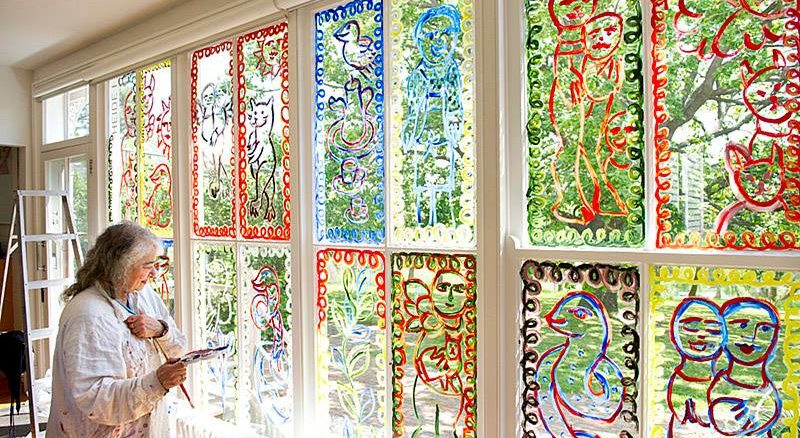
It was a cloudy morning when we parked our SUV at 7 Templestowe Road, Bulleen in Victoria. Despite out-of-towners assumption about Melbourne’s weather, November was a pleasant, warm and breezy 31 degrees.
I was thrilled when my cousins suggested we visit the now highly popular iconic Heide Museum of Modern Art. It has been decades since I lived in the area with my children. I remember the Heide home and according to the locals it was occupied by eccentric artists. I was always intrigued.
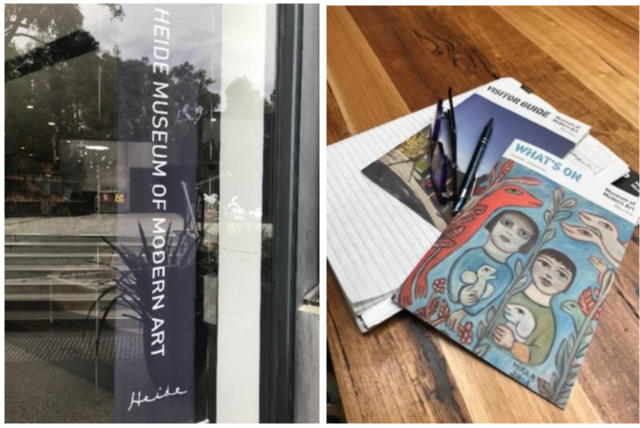
Even in the late 1980’s you could barely see the aged picket fence in front of the 19th century farm house. The home looked neglected as it lurked behind overgrown gum trees and undefined shrubs, but I remember the rose bushes.
During my regular drives down Templestowe Road, given the gossip, I often wondered what secrets lay behind the scraggly branches. At the time I was caught up with raising children after a shattering marriage break down. My love of art, influenced by my father, was all too hard to contemplate as a young mother. Sleep was the utopia we hungered for. Whereas in my present world, after a patient 30 years I am resurrecting my appreciation for art and history.
It was in 1934 when the house was affectionately named Heide and I have recently unearthed who lived there. Prominent arts benefactors John and Sunday Reed. They were immersed in the impressionist art movement that had already developed in the nearby suburb of Heidelberg in the late 1800’s.
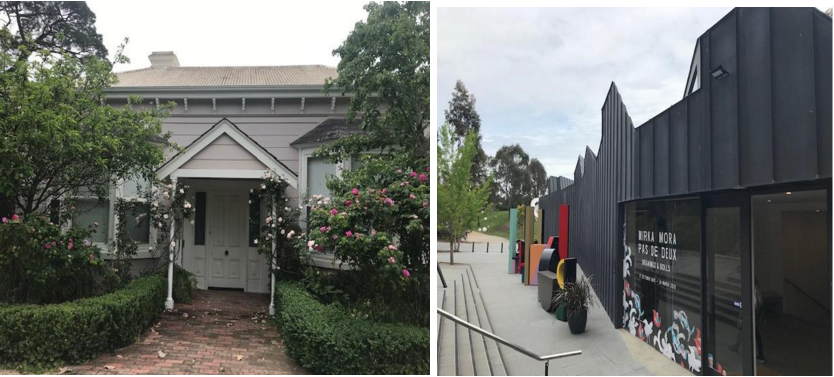
Like my recent discovery of Australia’s French impressionist John Russell at the Art Gallery of NSW, my elation was reignited as Heide’s secrets were revealed. How would the Reed’s feel to know their passion and dream would expand into one of Australia’s most important cultural institutions encompassing five galleries, over thirty sculptures on their sixteen acres of parklands and gardens. And to have a café embedded in a land of foliage and home grown seasonal food would be positively overwhelming.
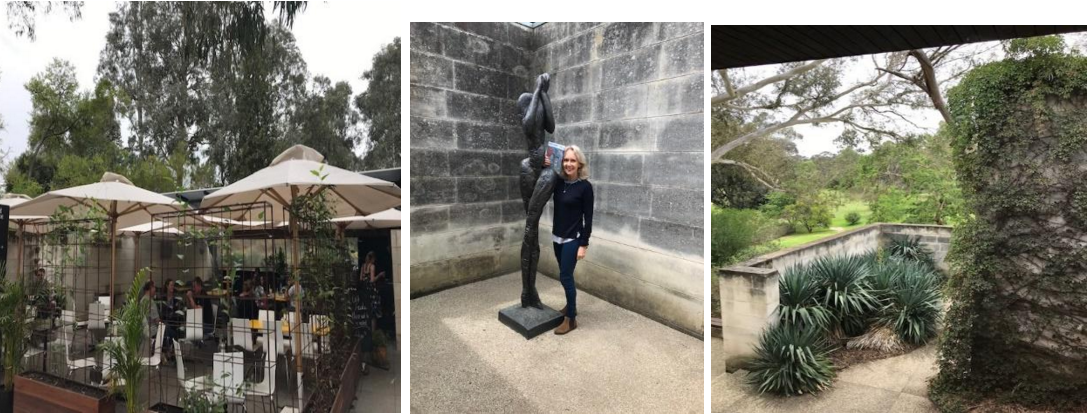
Even more revealing are the provocative personal stories that secrete from the art works on display. Firstly, that of the complex love entanglement of John and Sunday Reed, their ‘ménage a trois’ involvement with a young painter, a similar encounter with painter Sidney Nolan and talk of other enmeshments. There is a book, (another on my mushrooming list to read), “Modern Love: The Lives of John & Sunday Reed” written by curators Lesley Harding and Kendrah Morgan and it just about tells it all.
Be that as it may, we had a specific exhibition in mind following the recent death of one of Melbourne’s most beloved and distinctive artist’s, Mirka Mora. The French born Australian artist was ninety when she died in August 2018. Her first training was in mime and drama under legendary artist Marcel Marceau before her focus shifted to painting. She married French resistance fighter Georges in 1947 and the couple then came to Australia with their son Philippe in 1951. They later had two more sons, Tiriel and William.
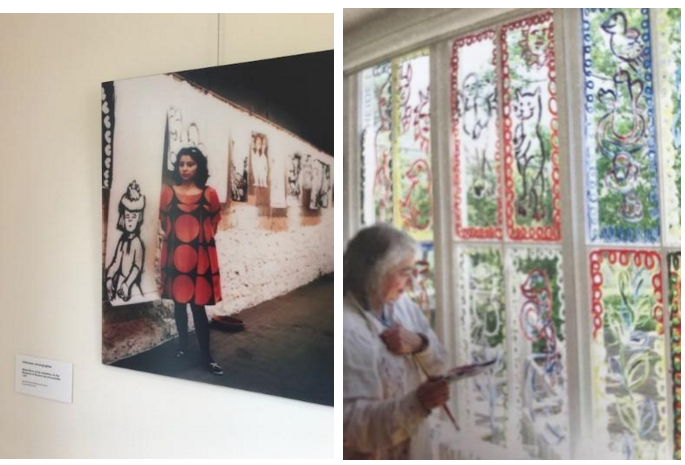
Mirka is a central figure in the Heide story and was known for her inimitable personality and bohemian lifestyle, reflected inevitably in her artwork of drawings and soft-sculptured dolls.
“My dolls are my drawings in three dimensions” and Heide has a magnificent myriad of her works on display. To the observer the dolls are not as expected if you are unfamiliar with her work. They are oddly shaped stuffed characters made out of plain muslin with painted folk art, surreal colourful pictures which is distinctly her own form of fantasy.
These are pieces of her personal work that have been kept in her home for decades.
The curators have dedicated a specific area for her dolls. You walk into her fairy land. A surreal eye-opening world of make believe.
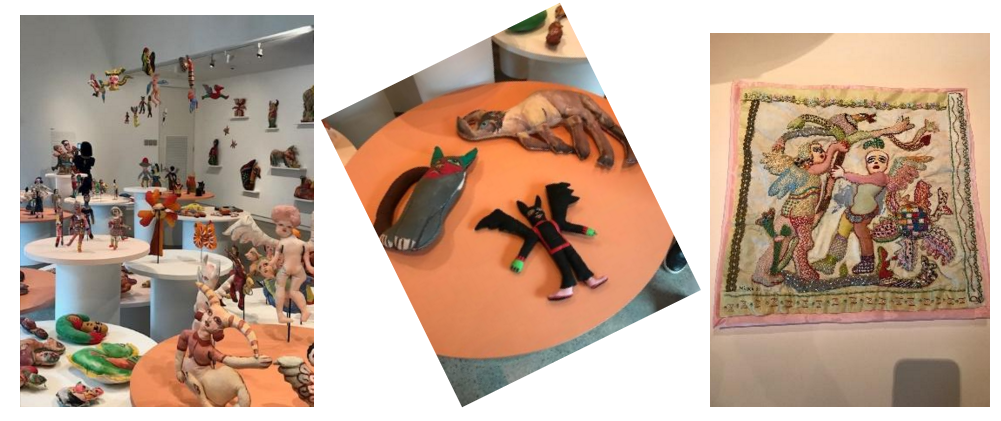
Mirka also had a penchant for charcoal as well as etchings produced in pen and ink. The majority of her characters tend to have large, deep expressive eyes and reminded me of forlorn Parisienne children. I can only imagine what it would be like to understand someone whose has an expressive art form akin to folk art.
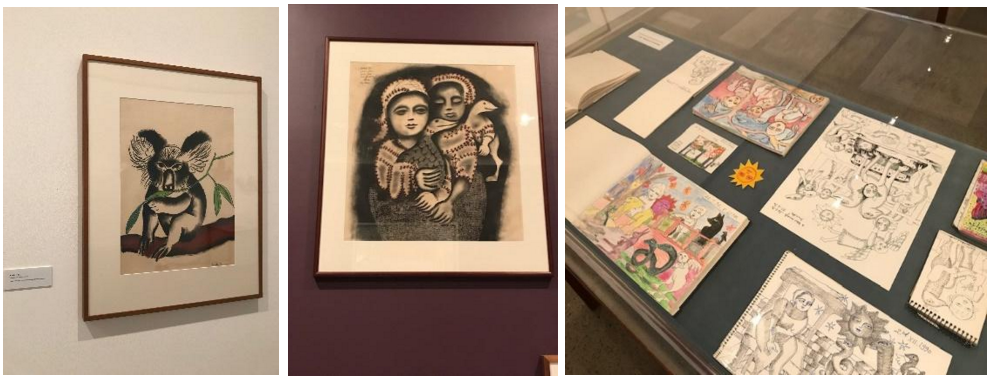
Folk art is often defined as utilitarian, and by the sound of things she had an enormous heart and would do “the most good for many”. Her pure aesthetics of making one contemplate her stories may have been precisely her practical intent. However you look at it, you have to admire her detailed colourful storytelling. For those who never had the pleasure of meeting her, we endeavour to envisage the workings of her inner soul.
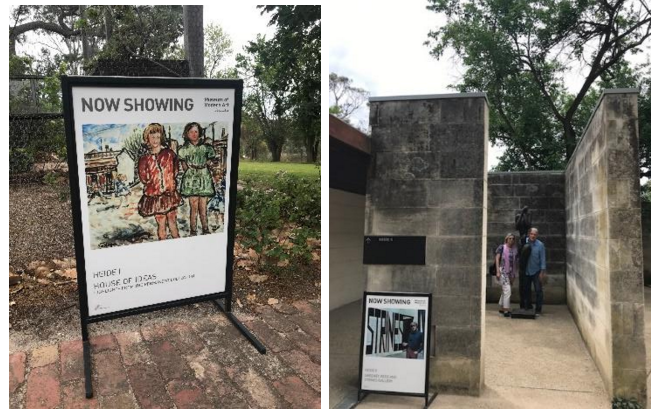
The impact of Mirka and Georges Mora on Australian art and food has been remarkable, they energised local society and transformed the culinary and artistic landscapes in Australia.
Also launched in the year of Mirka’s 90th is an illustrative story and French recipes “Mirka & Georges: A Culinary Affair”.
“Mirka Mora: Pas De Deux – Drawings and Dolls” exhibition continues until 24 March 2019.
Additional Heide exhibitions until 24 February 2019:
Sweeny Reed (artist &poet and adopted son of John and Sunday Reed) and Strines Gallery
Meditation on a Bone: Albert Tucker Beyond the Modern (artist and close friend of the Reed’s) a collection of paintings & personal artefacts,
Beyond the Modern and Danica Chappell’s reinterpretation of contemporary photography
Books can be purchased online or from www.heide.com.au
Ruth Greening holds a Bachelor of Arts degree majoring in Psychology & Philosophy. Before retirement, she worked for over 40 years in the corporate world in Melbourne and Brisbane and progressed into senior management positions and project roles for both private industry and government.
In her 70th decade, she continues in casual roles as a freelance writer, model, and actor participating in small movies, TV commercials and User Generated Content.
As a grandmother, she is known as Nanny Babe to her grandchildren and writes from a Baby Boomer perspective on her blog www.nannybabe.com. An avid crafter Ruth actively participates in sewing, crocheting and knitting.
While she continues to pursue her artistic passions, Ruth is dedicated to maintaining her health and fitness as she ages by attending the gym, dancing and walking and thrives on mentoring others.
Connect with Ruth or our moniker Nanny Babe; nannybabegengp.blogspot.com.au/


Leave a Reply